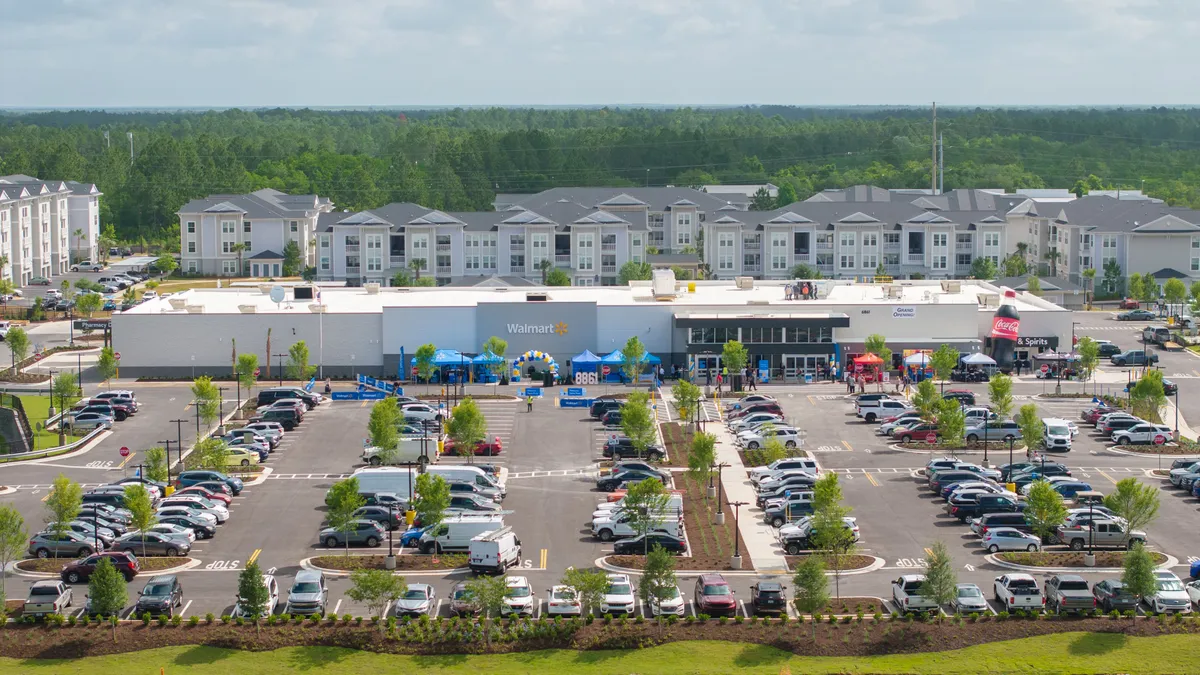Dive Brief:
- Revenue at convenience stores grew during the first six months of 2018, according to the National Association of Convenience Stores. Retailers said expanded selections of healthy snack and drink options were a primary sales driver.
- More than three in four (79%) convenience retailers said in-store sales increased over the first six months of 2018 compared to the same time last year. Only 7% of retailers said that in-store sales declined.
- The alternative snacks category, driven by protein and energy-rich items, is one of the fastest growing categories in the convenience retailing industry, per the NACS State of the Industry Report of 2017 Data.
Dive Insight:
Gone are the days when cigarettes, lotto tickets and gas sustained c-stores. According to NACS, operators whose store sales rank in the top quartile of the inTdustry sell three times more prepared foods and 6.6 times more hot coffee than companies that rank in the bottom one. And now, much like in the supermarket sector where more consumers demand high-quality meals and snacks on the go, a new trend toward healthy food in c-stores is emerging.
Nowadays, it’s not uncommon to find fresh-cut fruit, soups, wraps or even a salad bar inside the local convenience store. Between 1988 and 2016, convenience stores’ share of grocery sales doubled from 8% to 16%, according to The Food Institute. Even more recently, in the first half of 2018, retailers cited at 45% expansion of health bars in their stores, a 41% increase in fresh fruit and vegetables and a 37% growth in packaged salads.
This trend is evidenced by Kwik Trip, based in Eau Claire, Wisconsin, which delivers more than 80,000 pounds of bananas to its roughly 450 stores, according to NACS spokesman Jeff Lenard. Meanwhile, Sheetz and Wawa are building gas-free locations in urban centers that focus on prepared foods, produce and hot-selling snacks like all-natural beef jerky and nut mixes.
According to the Food Marketing Institute, shoppers increasingly prize not only quality but efficiency when it comes to prepared food offerings. This plays to convenience stores’ advantage given their size, reputation for speed and, with more than 154,000 locations nationwide, high density.
With this desirable combination working in their favor, c-stores are starting to edge in and become direct competition to supermarkets. Traditional grocery stores’ market share has steadily eroded, dropping from 49% in 2011 to 44% in 2016, according to Food Institute data. Much of that may have to do with blurring boundaries between c-stores and grocery stores. Whereas once the fresh aisle was the domain of the grocery store, now c-stores offer a similar, albeit smaller, selection of staples that you would find at any supermarket.
Recognizing this, in the past few years, grocers — who have long operated their own c-store formats — have built more convenience-focused locations. Giant Eagle’s GetGo gas stations are being remodeled and rebranded as GetGo Café + Market, and carry groceries as well as a variety of prepared foods. Hy-Vee has also invested in its convenience stores, while Martin’s in Indiana recently introduced a Martin’s Express format.
It is clear that shoppers today value speed, convenience and health when they need a bite to eat. Consumers are dedicated to their commitment to clean labels and free-from food — a trend that is clearly permeating throughout all levels of food retail. Still, speed appears to be the name of the game. With everyone from Amazon investing in Amazon Go to the prevalence of grab-and-go in supermarkets, it will be interesting to see if convenience or access to healthy fare become the main drivers behind consumers’ shopping choices.









